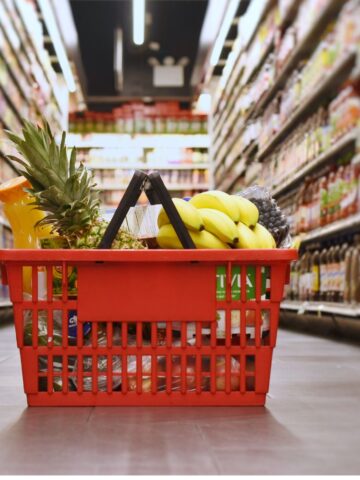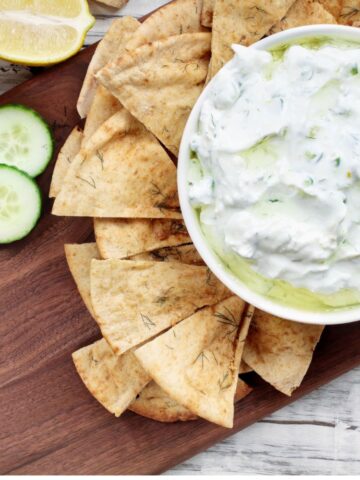Maintaining a healthy and well-stocked pantry can be a game-changer when it comes to making quick and easy meals. By having a variety of healthy pantry staples on hand, you can create nutritious meals without having to run to the grocery store every day. Stocking a healthy pantry is also a great way to save time and money.
As you can buy items in bulk and reduce food waste by using up ingredients before they expire…though some foods just have a best before date rather than expiration. In this blog post, we'll provide you with tips and suggestions for stocking a healthy pantry that will make meal planning and preparation a breeze.
Whether you're a seasoned cook or a beginner in the kitchen, this guide will help you create delicious and nutritious meals using pantry staples.

The Basics: Essential Pantry Items
When it comes to stocking your pantry with healthy staples, there are some must-have items that will save you time, money, and sanity in the kitchen. We're talking about whole-grain pasta and rice, the dynamic duo that can be the base of countless tasty meals.
And let's not forget about canned beans, those mighty little legumes packed with protein and fiber that can add texture and depth to any soup, stew, or salad. Plus, canned tomatoes, the unsung hero that can elevate any dish, from spaghetti sauce to a hearty beef stew. And when you need to add some flavor to your recipes, don't forget about the importance of broth or stock, olive oil, and vinegar.
They are the foundation of most sauces, dressings, and marinades that will take your meals to the next level.
Finally, don't forget about nut butter, nuts, and seeds - they are not only great for snacking but also a fantastic source of protein and healthy fats that can transform a simple dish into a wholesome and satisfying one.
So, whether you're a busy parent or a meal prep enthusiast, stocking up on these essential healthy pantry items will help you whip up quick and delicious meals in no time.
Fresh Produce For A Healthy Pantry
Fresh produce is the real MVP when it comes to healthy eating, and stocking up on a variety of colorful fruits and veggies can elevate your meals to a whole new level of deliciousness. Let's start with leafy greens - think spinach, kale, arugula, and lettuce. These powerhouses are not only packed with nutrients like vitamins A, C, and K, but they can also add a burst of fresh flavor and texture to your salads, sandwiches, and smoothies.
Root vegetables
Carrots, beets, sweet potatoes, and squash may not be the most glamorous veggies, but they are nutritional powerhouses. They can be roasted, mashed, or turned into soups and stews. And let's not forget about the cruciferous veggies - broccoli, cauliflower, Brussels sprouts, and cabbage. These guys may not win any popularity contests, but they are high in fiber and can be roasted, steamed, or sautéed to add some texture and crunch to your meals.
Berries and Citrus
Berries are another fresh produce item that can brighten up your plate and your taste buds. Blueberries, strawberries, raspberries, and blackberries are low in calories and high in antioxidants, making them a perfect snack, smoothie addition, or dessert ingredient.
Citrus fruits, like oranges, lemons, limes, and grapefruits, are not only a great source of vitamin C but also add a zesty kick to any recipe. Squeeze them over salads, fish dishes, or use them in marinades or dressings to add some tang and depth to your meals.
Last but not least, tomatoes are a versatile ingredient that can be used in so many ways - salads, sandwiches, sauces, soups, you name it. They are also a great source of lycopene, a powerful antioxidant that may help reduce the risk of cancer.
By incorporating these fresh produce items into your diet, you'll not only add a variety of flavors and textures to your meals but also reap the benefits of their rich nutrients and antioxidants. So go ahead and stock up on these vibrant fruits and veggies - your body (and your taste buds) will thank you!
Whole Grains and Legumes - Basis For a Healthy Pantry
These little powerhouses may not be as flashy as some other ingredients, but they are packed with fiber, protein, and essential nutrients that can do wonders for your health. Here are some of my favorite whole grains and legumes that you should definitely stock up on:
Quinoa. The superfood grain that's a complete protein source and high in fiber and iron. It's the perfect addition to salads, stir-fries, and soups.
Brown rice. The unsung hero of the rice family. It contains more fiber and nutrients than its white counterpart and can be used in pilafs, stir-fries, and casseroles.
Lentils. Lentils are also a fantastic choice. They're a great source of plant-based protein, rich in iron and folate. They can be used in soups, stews, salads, and even veggie burgers. I like to have red lentils in my pantry at all times.
Chickpeas. Dried or canned I always have some! These versatile legumes can be used in salads, hummus, soups, and stews. They are high in fiber and protein, making them perfect for any vegetarian or vegan diet.
Oats. A great source of fiber that can be used in oatmeal, baked goods, and even as a crust for savory dishes.
Canned and Frozen Foods
Canned and frozen foods are like superheroes in your pantry and freezer, ready to save the day when you need to whip up a meal in a hurry. They're the ultimate convenience food, affordable and easy to store for months at a time. So, if you're a busy bee who doesn't have time to go grocery shopping every other day, here are some must-haves to add to your list:
Canned tuna and salmon. These are the superheroes of the seafood world, packed with protein and omega-3 fatty acids. Use them to create a delicious sandwich or salad, or add them as a topping for your baked potato to give it some extra zing.
Frozen vegetables. Don't have time to chop up fresh veggies? No problem! Frozen vegetables are just as nutritious and versatile. Add them to stir-fries, soups, or simply enjoy them as a side dish.
Canned tomatoes and tomato sauce. These are the backbone of many quick and easy pasta sauces and stews. So, don't forget to stock up on these essential ingredients that add flavor and nutrition to your dishes.
Frozen fruit. Whether you want to add some fruity goodness to your smoothie or create a tasty dessert, frozen fruit is a game-changer. And, the best part is that it's already prepped and ready to go.
Frozen seafood. Shrimp and other frozen seafood are quick-cooking and perfect for adding a boost of protein to your meal. Throw them into a stir-fry, pasta dish, or on top of your salad for a healthy and delicious meal.
Spices and Condiments
Spices and condiments are like the secret weapons of home cooks - they can take your meals from blah to wow with just a pinch or a drizzle. Here are some spices and condiments that you should definitely have in your pantry.
Salt and pepper. These two spices are the basic building blocks of flavor. Don't underestimate their power to bring out the natural flavors of your ingredients.
Garlic powder. A must-have in any kitchen, but fresh garlic can be a hassle to peel and chop. Garlic powder is a convenient and flavorful substitute that can be used in marinades, dressings, and even popcorn seasoning.
Soy sauce. This umami-packed sauce adds depth of flavor to stir-fries, marinades, and dipping sauces. It's also a key ingredient in many Asian dishes.
Hot sauce. Whether you like it mild or spicy, hot sauce can add a kick to everything from eggs to tacos. There are so many varieties to choose from, so find one that suits your taste buds.
Honey. This sweet liquid gold can be used as a natural sweetener in dressings, marinades, and even as a glaze for roasted vegetables or meats.
By having these spices and condiments on hand, you can elevate your cooking game and create delicious and flavorful meals. Plus, they are easy to find and affordable, so there's no excuse not to stock up! Read our article on the role of herbs and spices in creating healthy meals for more ideas.
Meal Planning and Preparation
Meal planning and preparation might seem like a chore, but trust me, it's worth it! Planning out your meals ahead of time can save you time and money, reduce food waste, and ensure that you're eating healthy and nutritious meals.
First, take some time to plan out your meals for the week. This can be as simple as writing down a few ideas for breakfast, lunch, and dinner. Make sure to include a variety of foods to keep things interesting and to ensure that you're getting all the nutrients you need.
Once you have your meal plan, it's time to do some preparation. Chop up your veggies, cook your grains and proteins, and portion out your meals ahead of time. This will not only save you time during the week but will also make it easier to resist the temptation to order takeout when you're feeling lazy.
Investing in some quality storage containers is also a must. These will keep your food fresh and make it easy to grab and go during the week. Plus, they're better for the environment than constantly using disposable containers.
And don't forget to have some fun when stocking your healthy pantry! Experiment with new recipes and flavors, and don't be afraid to get creative in the kitchen. Meal planning and preparation doesn't have to be boring - it can be a fun and rewarding experience that will help you achieve your health and wellness goals.





Comments
No Comments